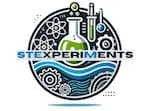Table of contents
About the project
Key highlights and objectives
Objectives
The main goal of our project is to develop a set of learning activities built around real and virtual STEM experiments and thus help teachers to include meaningful STEM in their teaching. The activities will offer methodical guidance for STEM disciplines’ inclusion which will mainly target students’ skills and competencies. The activities piloted on a sample of pre-and in-service teachers will be disseminated among teachers and teacher training institutions in the partnering countries.
Implementation
First, each partner will develop two activities based on STEM experiments: one real and one virtual together with a methodology to assess the activity. Other partners serve as opponents. The activities will be piloted with pre- and later with in-service teachers. They will be improved based on the feedback and disseminated using the partners’ networks. A toolkit including the activities and methodologies will be provided. Several publications and conference contributions will spread the results.
Results
The project will have three main results:
- a free available toolkit including four piloted real (hands-on) STEM experimental activities and four piloted virtual STEM experimental activities
- a methodology of students’ learning performance using the activities.
- a series of appropriate social networks showcasing the project’s partial outcomes and methods to demonstrate the applicability of the STEAM pedagogies
Project Background
There is an increasing demand for STEM skills in the European Union’s labor market. There is an expectation of more than 7 million STEM positions, which have no one to fill (EU, 2015). Especially two main sectors are facing skill shortages: IT and STEAM, while 90% of jobs will need digital competencies. To overcome the STEM skill gap, the EU claims for the development of quantity and quality in STEM education. The current policies also support “interdisciplinary study programs” and encourage the promotion in tandem of science, technology, engineering, art and mathematics (STEAM) disciplines of human and social sciences. These related tendencies assume that “the earlier people acquire STEAM / STEM skills, the better their chances of future educational and professional success will be” (EU, 2018) The European Union (EU) faces skills shortages in the STEM–science, technology, engineering and mathematics – and information and communications technology (ICT) fields. Women, especially, are underrepresented in these fields. The European Committee of the Regions is calling for measures to promote science, technology, engineering and mathematics (STEM) education in Europe, especially among girls and women. The availability of STEM-skilled people is an important prerequisite for innovation and sustainable economic growth. New skills needs are emerging because of the ongoing green and digital transitions of society. The EU needs to act if it is to ensure the continuous development of skills required to remain economically competitive at the global level. More people should be encouraged to study subjects in which skills shortages and labor demand exist. All students need to acquire advanced ‘transversal skills’ that can be applied in a wide range of settings, such as critical thinking and problem-solving skills. The acquisition of key competencies, such as numeracy and digital skills, is also essential. The EU economy is constantly evolving. The demand for relevant knowledge, skills and attitudes changes over time. To deal with these changes, people need to be equipped with a set of key competencies – including literacy, numeracy and digital competence. These skills cannot be taught in a teacher-centred setting and, for STEM disciplines, without students’ experiments. Yet, in many countries, including the partners’, a strong tradition focused on hard facts persists, which makes implementing STEM even more difficult. Also, some teachers struggle with experiments and do not employ them for purposes like lack of methodology or equipment. This project targets both providing the methodology and implementing virtual experiments to develop different sets of student’s skills.
